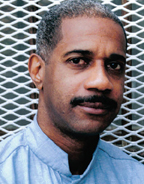 |
Criminal Justice System Reform: Thoughts from a Prisoner And hope is a main stay, especially for those of us who possess a front row seat in this indeterminate quagmire of mass incarceration. | |
|---|---|---|
| How to Grow Old in Your Own Home According to an AARP survey, nearly 90% of those over age 65 want to stay in their homes for as long as possible. |
||
| Adele? She has a way of conjuring up Hyman, but for my ears there will be no replacement. |
||
| Afro-Iraqi Seek Voice There are an estimated 1.5 million African Iraqis in Iraq today but they are hardly ever seen. |
||
| Thanks for a Good 2015 - POHGEP The two new panels we want to add to the exhibit carry more weight than the others. |
||
| Activities Interesting, diverse things to do |
||
| Readers' Trends Port Of Harlem, Pinterest, and Facebook |
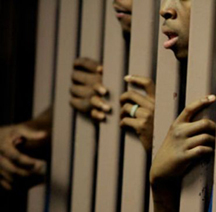 Mass incarceration makes the United States not as good as it could be and we need to do something about it. When President Obama addressed the NAACP’s 106th national convention in Philadelphia, he laid out the reasons to reform America’s criminal justice system and to invest in our communities while expanding opportunities for all citizens.
Mass incarceration makes the United States not as good as it could be and we need to do something about it. When President Obama addressed the NAACP’s 106th national convention in Philadelphia, he laid out the reasons to reform America’s criminal justice system and to invest in our communities while expanding opportunities for all citizens.
“Our criminal justice system isn’t as smart as it should be,” the President noted as the call for sentencing reform reflects a shift in Americans’ opinions of its criminal justice policies. As thoughts shift, several states, red and blue, have acted to reduce their prison populations over the last five years and have seen their crime rates fall.
Republicans and Democrats seldom concur; however, they are agreeable on this issue. The President went on to share with the convention, “Republican senators from Utah and Texas are joining Democratic senators from New Jersey and Rhode Island to talk about how Congress can pass meaningful criminal justice reform this year.”
And, data are finally driving policy changes. Here are some data that reveal some larger truths.
According to Justice Department statistics, American taxpayers spend $80 billion to keep people incarcerated. For Maryland taxpayers, this amounts to about $32,000 per person and $50,000 per person for those who require senior care.
America is home to five percent of the world’s population, but 25 percent of the world’s prisoners. “We keep more people behind bars than the top 35 European countries combined,” President Obama declared. In 1980, there were half a million people behind bars in America. Today, there are 2.2 million - - doubling in the last two decades alone.
Mass incarceration disproportionately impacts communities of color. Thirty percent of the American population consists of African Americans and Latinos, yet they make up 60 percent of the inmates. About one in every 35 African American men and one in every 88 Latino men are serving time right now. Among White men, that number is one in 214.
Obama commented on this disparity, “They (African Americans) are more likely to be sentenced to more time for the same crime.” The effects include having one million fathers incarcerated, which results in one in nine African American children having a parent in prison.
The President blue printed three principles for future reform. The first is the community. The optimal opportunity to deter crime is prior to its inception. One study demonstrates that for every dollar invested in pre-school, America saves twice that over the long run in crime abatement. “If we make investments early in our children,” President Obama asserted, “we will reduce the need to incarcerate those kids.”
As Republican Senator John Cornyn (R-TX) has reminded us, “Virtually all the people incarcerated in our prisons will eventually someday be released.”
This leads to the third reform: the cell block. At the Montgomery County (Maryland) Detention Center, for example, they installed a job training center inside the center to motivate inmates to consider a life outside of criminal activity.
America has a responsibility to boost the possibility that inmates can turn their lives around. An aspect of this thought starts by repairing the conditions of our prisons and affording tangible career training. As Republican Senator John Cornyn (R-TX) has reminded us, “Virtually all the people incarcerated in our prisons will eventually someday be released.”
America must broaden access to opportunity, for justice is not only the absence of oppression , it is the presence of opportunity. President Obama reiterated, “We want to be in a position in which if somebody in the midst of imprisonment recognizes the error of their ways, is in the process of reflecting about where they’re been and where they should be going, we’ve got to make sure that they’re in a position to make the turn.”
Maryland’s Republican Governor Larry Hogan has taken the led to address mass incarceration on another front with a more thoughtful approach to clemency requests. The governor has signaled that he would take a much more expansive view of his power to change sentences when it serves justice. “People who have paid their debt to society and pose no threat to the community ought to be able to expect that their petition for parole, pardon, or clemency will be considered on the merits, not the politics,” reported Maryland Voices.
Governor Hogan’s administration has already notified a dozen people who have served significant sentences and who could be candidates for commutations or parole, along with nearly 300 who could be pardoned that he may erase their relatively minor crimes from their records.
The response to the governor stepping out of the shadows of past administrations is one of unfettered hope. And hope is a main stay, especially for those of us who possess a front row seat in this indeterminate quagmire of mass incarceration.
According to an AARP survey, nearly 90% of those over age 65 want to stay in their homes for as long as possible. But those who want to stay put as they grow older, "need to have a plan—and a support system—in place that allows them to stay in their community, ideally in their home, as long as possible, and to ensure that they’re living safely and independently," explains Suzanne Schmitt, vice president for family engagement at Fidelity.
Here are five things that aging singles or couples—and their children, other family members, or caregivers—should keep in mind when assessing the living situation.
For the complete story from Fidelity.
 I don’t own a single Adele song, never downloaded one, nor have I fully listened to any song. They make me sad. However, it’s not her singing, the music, or the lyrics that make me feel that way. It’s that she reminds me of the late songstress Phyllis Hyman (July 6, 1949 – June 30, 1995) and after reading a TIME article on her, I know why.
I don’t own a single Adele song, never downloaded one, nor have I fully listened to any song. They make me sad. However, it’s not her singing, the music, or the lyrics that make me feel that way. It’s that she reminds me of the late songstress Phyllis Hyman (July 6, 1949 – June 30, 1995) and after reading a TIME article on her, I know why.
In the article, Sam Lanksy writes, “she kicks of her shoes . . .” before she engages her audience in conversation. Hyman fans will probably recall Hyman doing likewise. But, most importantly, Adele's entertainment style is not rooted in White England, but Black America.

“She studied Ella Fitzgerald and Nat King Cole . . .” says Ryan Tedder, who wrote two songs with Adele on her album, “21.” Furthermore, she says Lauryn Hill, Alicia Keys, and Etta James inspired her. Adele’s relatable biography includes being raised by a single-mother in a working class neighborhood and she has a child with her long-term male partner.
Unlike the likes of the late Teena Marie, her style has traditionally had more “cross-over” appeal. Therefore, unlike Marie, she has avoided the labels such as “Blue-eyed soul,” or “Vanilla -Choc.” Nevertheless, she is a keeper of the culture and I like her and her music, but she has a way of conjuring up Hyman and for my ears there will be no replacement.
 There are an estimated 1.5 million African Iraqis in Iraq today but they are hardly ever seen in the country’s political or even its social and cultural, life. A former champion boxer, Salem Shaaban, heads the Movement of Free Iraqis, or Ansar Al Huriyah, an organization that advocates for Iraqis of African origin.
There are an estimated 1.5 million African Iraqis in Iraq today but they are hardly ever seen in the country’s political or even its social and cultural, life. A former champion boxer, Salem Shaaban, heads the Movement of Free Iraqis, or Ansar Al Huriyah, an organization that advocates for Iraqis of African origin.The planning conference for the Movement of Free Iraqis – the first organization of its kind to defend the rights of Iraqis of African origin in Iraq and the Middle East – was in 2009 and it was held directly after Barack Obama’s victory in the US Presidential elections. During that conference, we formulated our founding principles and announced the names of board members – this included two women board members
Click here for the full story
Thanks for FULLY funding most of the Port Of Harlem Gambian Education Partnership (POHGEP) programs. However, when the calendar and tax year came to a close, we needed only $100. Yes, only $100 to complete two more panels to add to the West Africans in Early America exhibit. And, we needed only $120 to fully fund our general operations for 2016.
The two new panels we want to add to the exhibit carry more weight than the other six we have completed as we hear and witness more Islamphobia. The next two panels are for two of our ancestors whose Islamic heritage is well documented. Here are their stories that we would like to share as we educate Americans and Senegambians (Senegalese / Gambians) about our shared heritage.
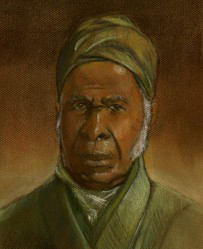 Hajji Omar Ibn Sayyid (1770 – 1864)
Hajji Omar Ibn Sayyid (1770 – 1864)
Omar ibn Sayyid was a writer and Islamic scholar born in present day Futa Toro, Senegal. Educated in Bundu, he later made pilgrimage to Mecca (Hajji) before being enslaved in 1807 and sold in Charleston, South Carolina, USA.
Although Sayyid converted to Christianity around 1820, many modern scholars believe he continued to be a practicing Muslim, based on dedications to Muhammad written in his Bible.
While enslaved, he wrote a series of works on history, theology and, in 1831, his autobiography. He also wrote fourteen letters in Arabic.
The University of North Carolina at Chapel Hill houses some of his writings. Davidson College in Davidson, North Carolina has archived his letters.
 Ayuba Suleiman Diallo (Job ben Solomon) (1701-1773)
Ayuba Suleiman Diallo (Job ben Solomon) (1701-1773)
Born in Bundu, Senegal, into a family of Muslim clerics, Ayuba Suleiman Diallo was enslaved around 1730 and sent to Annapolis, Maryland, USA. via Saint James (Kunte Kinte) Island. A chance meeting with a lawyer, who was impressed with his knowledge of Arabic, led to a series of events that landed him in England.
In England, he mixed with high society, bought out of slavery by public subscription, was inducted into the Gentleman's Society of Spalding, and wrote his memoirs. For anti-slavery advocates, he served as a talking point.
William Hoare of Bath painted his portrait in 1733, which now hangs in the National Portrait Gallery in London. Diallo sailed to Gambia in 1734 and eventually returned to Bundu. He had two wives and several children.
Note from the (Gambia) Director General National Centre for Arts and Culture
Dear Wayne,
Seasons greetings and I am wishing you the best for 2016. I just saw your post in the newsletter asking for donations for the new additions to the exhibit. They were quite interesting and exciting characters. I look forward to adding them to what we have.
Thanks again for the good work for Gambia.
Regards Baba Ceesay
Director General
National Centre for Arts and Culture
Independence Drive PMB 151 Banjul,The Gambia
Tel(Office) +220 8906759
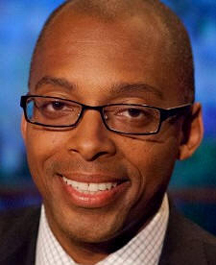
Dr. Khalil Gibran Muhammad
Washington
NBC4 Health and Fitness Expo
Walter E. Washington Convention Center
Sat, Jan 9-Sun, Jan 10, Free
Dr. Khalil Gibran Muhammad
Baird Auditorium
Annual Martin Luther King Jr Celebration
National Museum of Natural History
10th and Constitution, NW
Fri, Jan 15, 7p-9p, free
When the Moors Ruled Europe (film)
America’s Islamic Heritage Museum
2315 Martin Luther King
Fri, Jan 15, 6p-7:30p, free
Dr. Martin Luther King, Jr. Parade
Downtown Westside
Jan 18, noon-2p, free
New York
30th Annual Brooklyn Tribute to
Dr. Martin Luther King Jr.
BAM Howard Gilman Opera House
30 Lafayette Ave
Brooklyn
Mon, Jan 18, 10:30a, free
New York Restaurant Week
Mon, Jan 18-Fri, Feb 5, $
London, UK
American Rap Artist, Future
O2 Academy Brixton
211 Stockwell Rd
Fri, Jan 8, 7p, $60-$89
TV
In Performance at The White House
Fri, Jan 9p, EST, free
| From the Last Issue | On Pinterest | On Facebook | On Website | |||
|---|---|---|---|---|---|---|
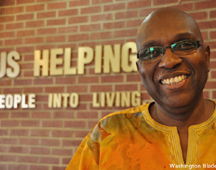 Ron Simmons to Steps Down |
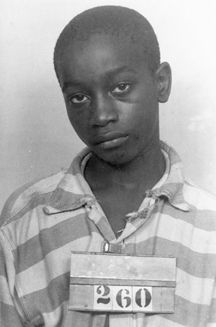 Young, Black, & Presumed Guilty: The Historical Burden of Being Prejudged a Menace to Society |
 |  C R Gibbs (3rd consecutive) |
 |
Like Port Of Harlem on Facebook |
|---|---|
 |
Follow Port Of Harlem on Twitter |
 |
Follow Port Of Harlem pins on Pinterest |


